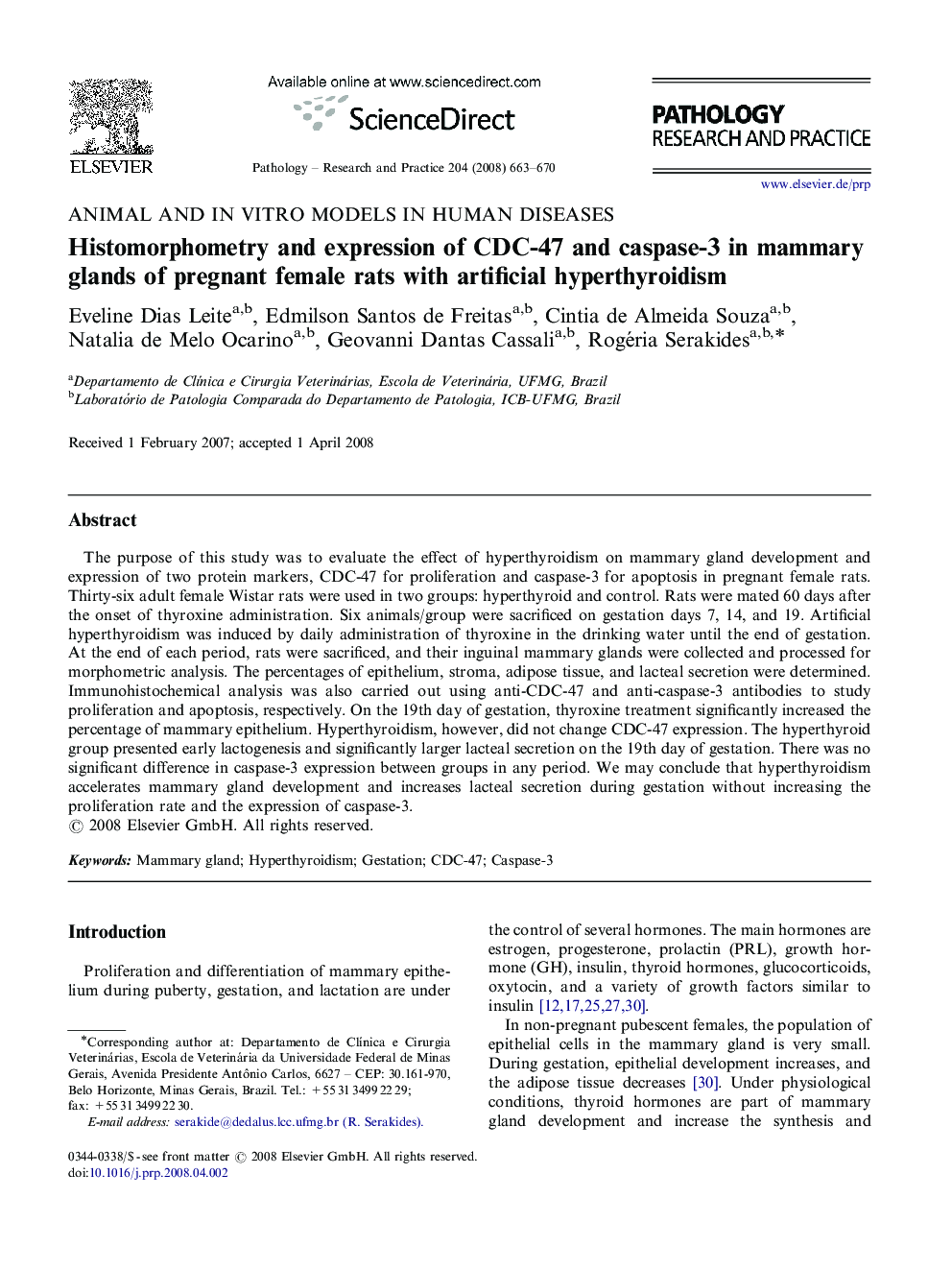| Article ID | Journal | Published Year | Pages | File Type |
|---|---|---|---|---|
| 2156673 | Pathology - Research and Practice | 2008 | 8 Pages |
Abstract
The purpose of this study was to evaluate the effect of hyperthyroidism on mammary gland development and expression of two protein markers, CDC-47 for proliferation and caspase-3 for apoptosis in pregnant female rats. Thirty-six adult female Wistar rats were used in two groups: hyperthyroid and control. Rats were mated 60 days after the onset of thyroxine administration. Six animals/group were sacrificed on gestation days 7, 14, and 19. Artificial hyperthyroidism was induced by daily administration of thyroxine in the drinking water until the end of gestation. At the end of each period, rats were sacrificed, and their inguinal mammary glands were collected and processed for morphometric analysis. The percentages of epithelium, stroma, adipose tissue, and lacteal secretion were determined. Immunohistochemical analysis was also carried out using anti-CDC-47 and anti-caspase-3 antibodies to study proliferation and apoptosis, respectively. On the 19th day of gestation, thyroxine treatment significantly increased the percentage of mammary epithelium. Hyperthyroidism, however, did not change CDC-47 expression. The hyperthyroid group presented early lactogenesis and significantly larger lacteal secretion on the 19th day of gestation. There was no significant difference in caspase-3 expression between groups in any period. We may conclude that hyperthyroidism accelerates mammary gland development and increases lacteal secretion during gestation without increasing the proliferation rate and the expression of caspase-3.
Related Topics
Life Sciences
Biochemistry, Genetics and Molecular Biology
Cancer Research
Authors
Eveline Dias Leite, Edmilson Santos de Freitas, Cintia de Almeida Souza, Natalia de Melo Ocarino, Geovanni Dantas Cassali, Rogéria Serakides,
